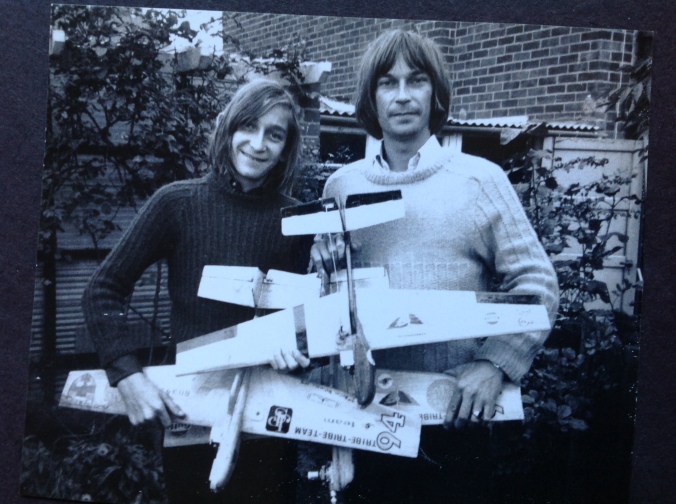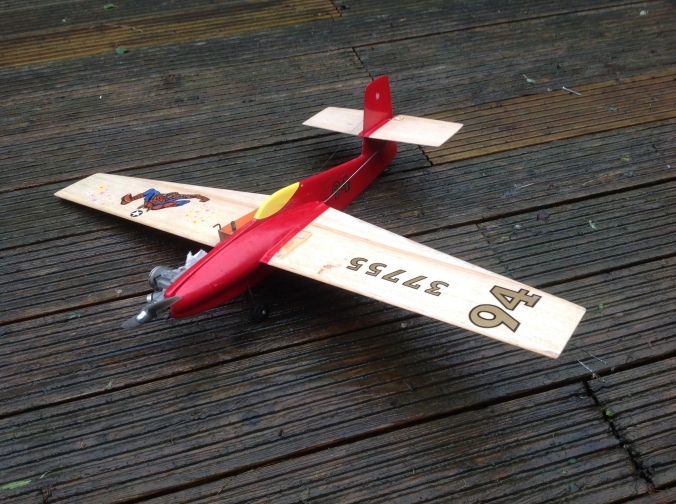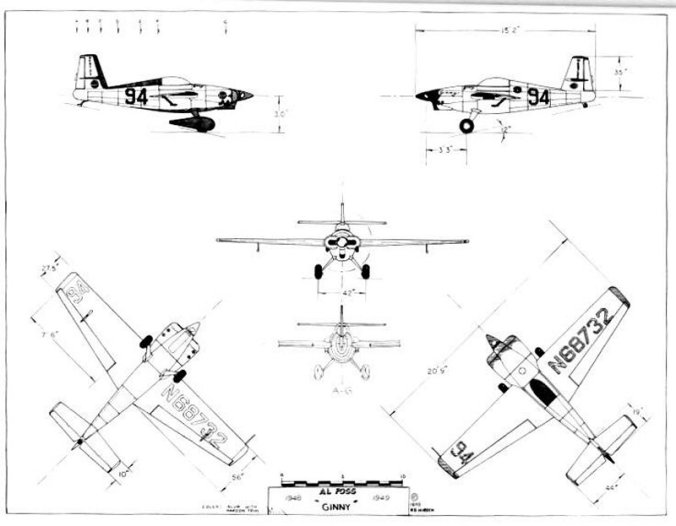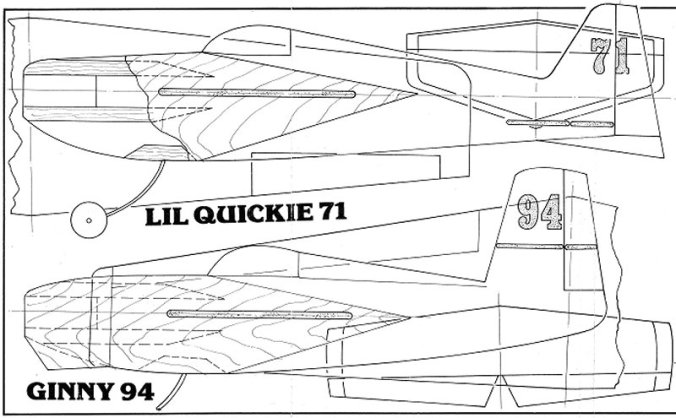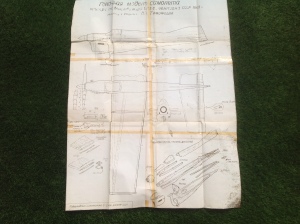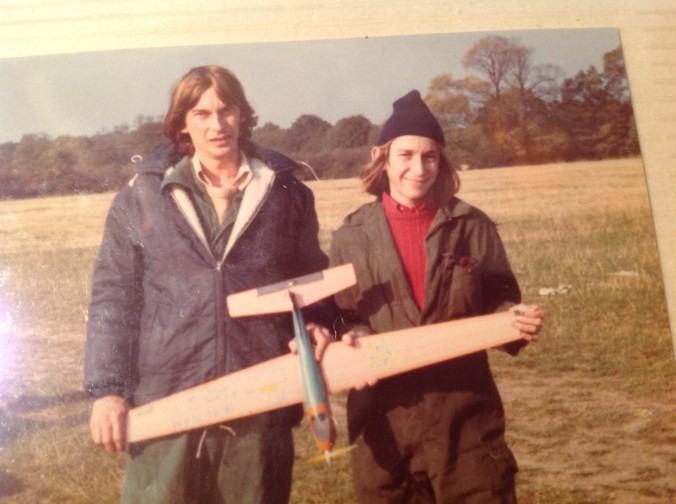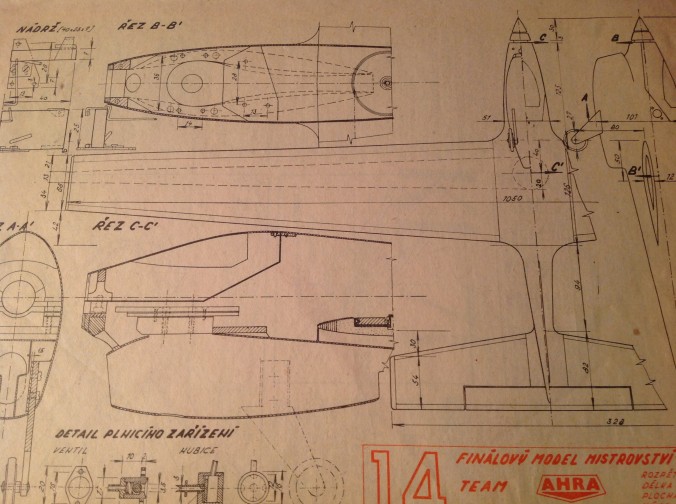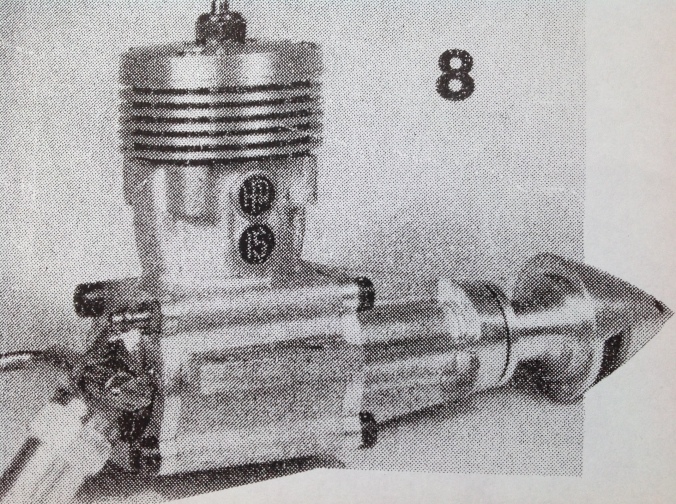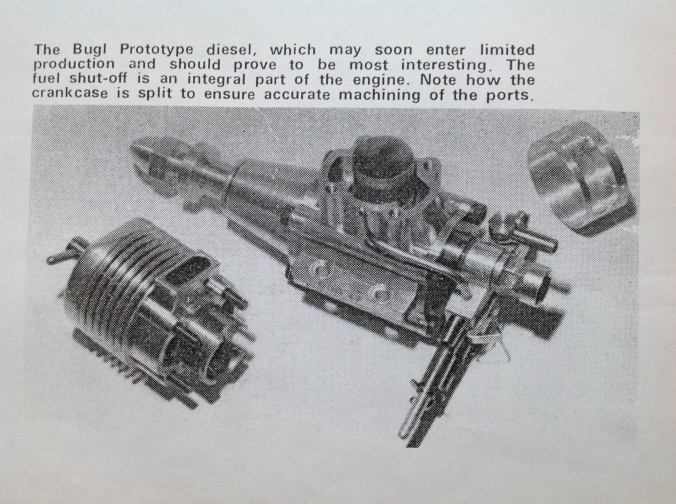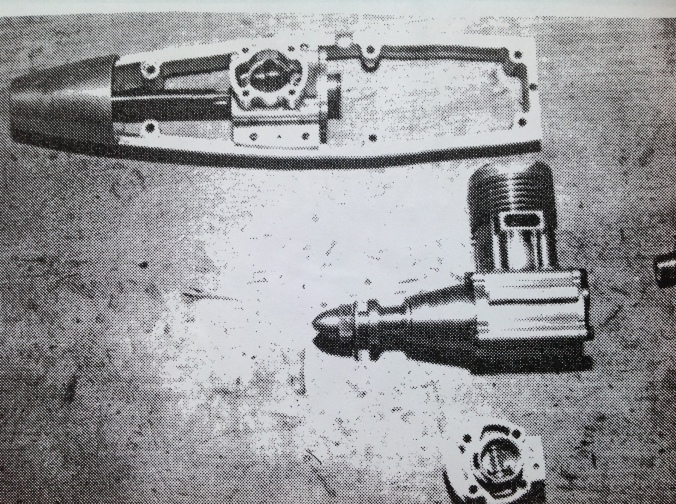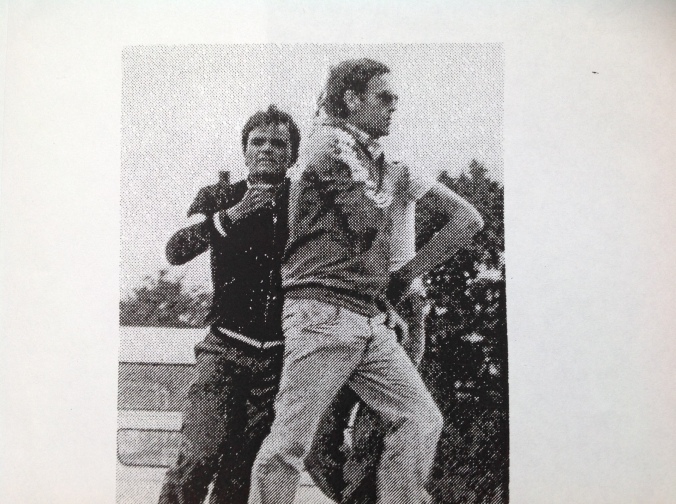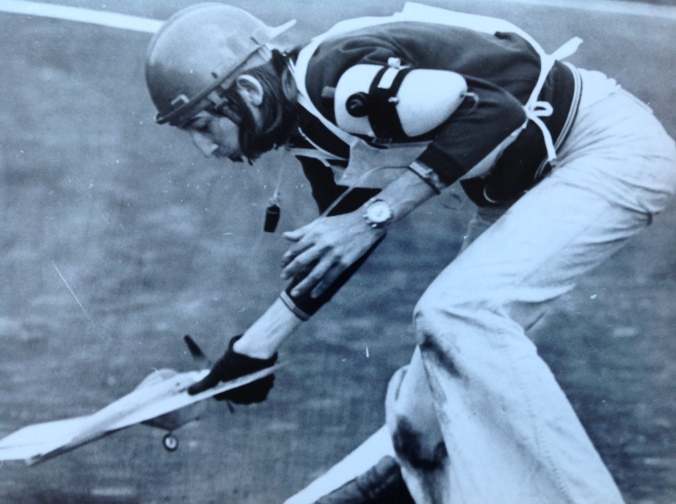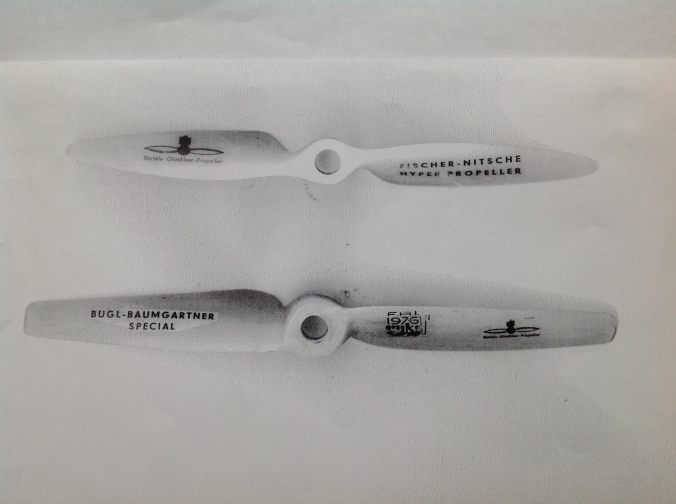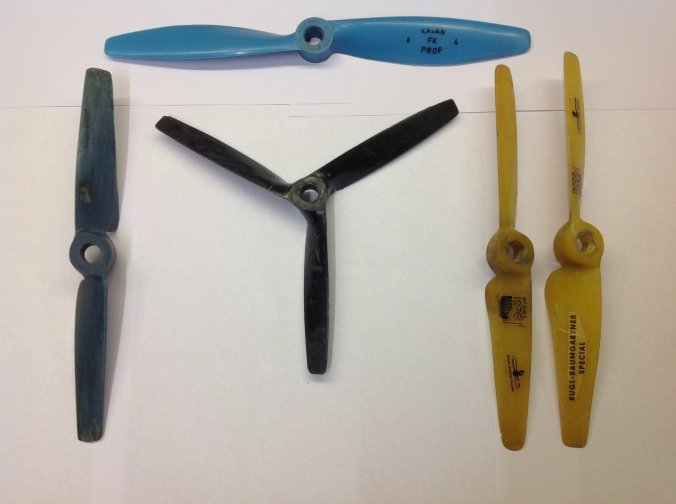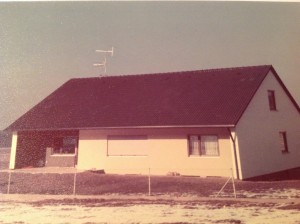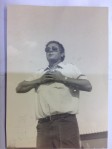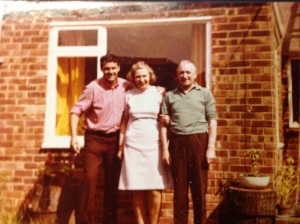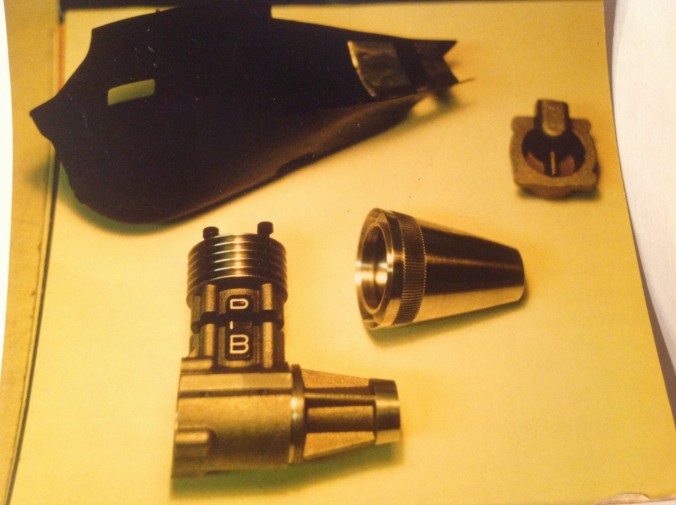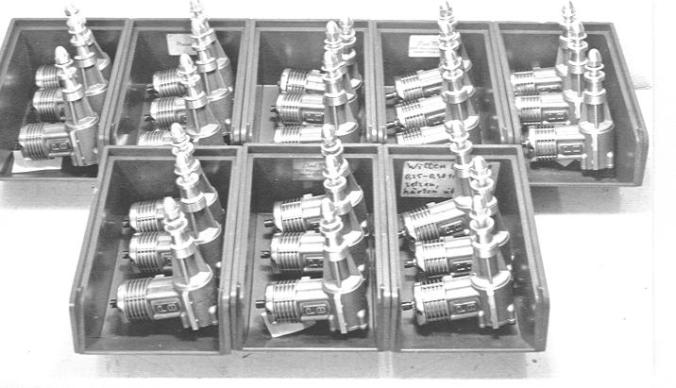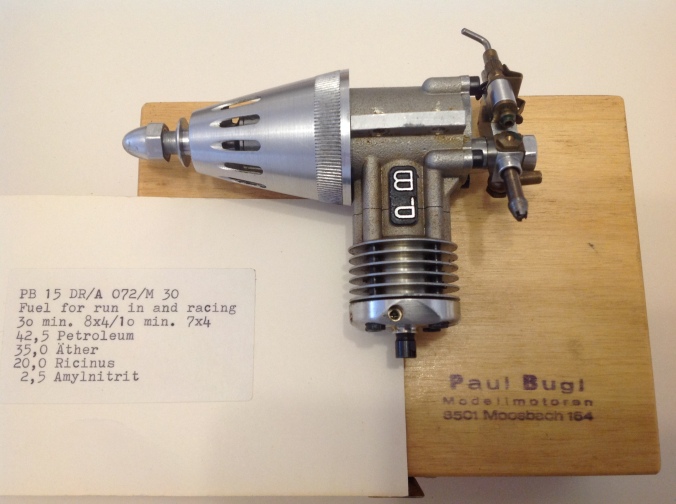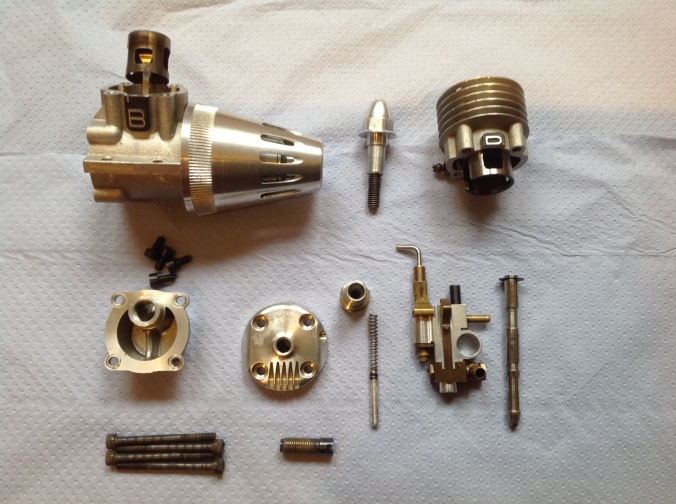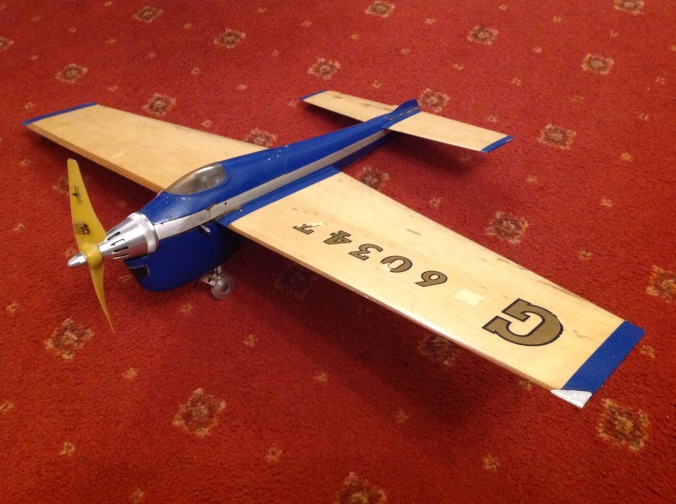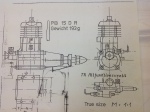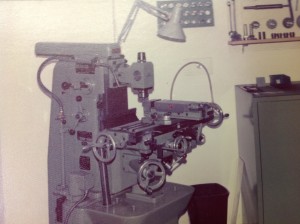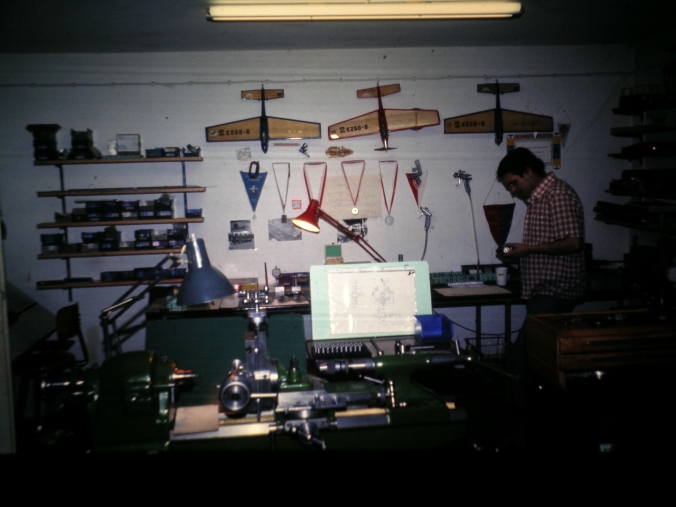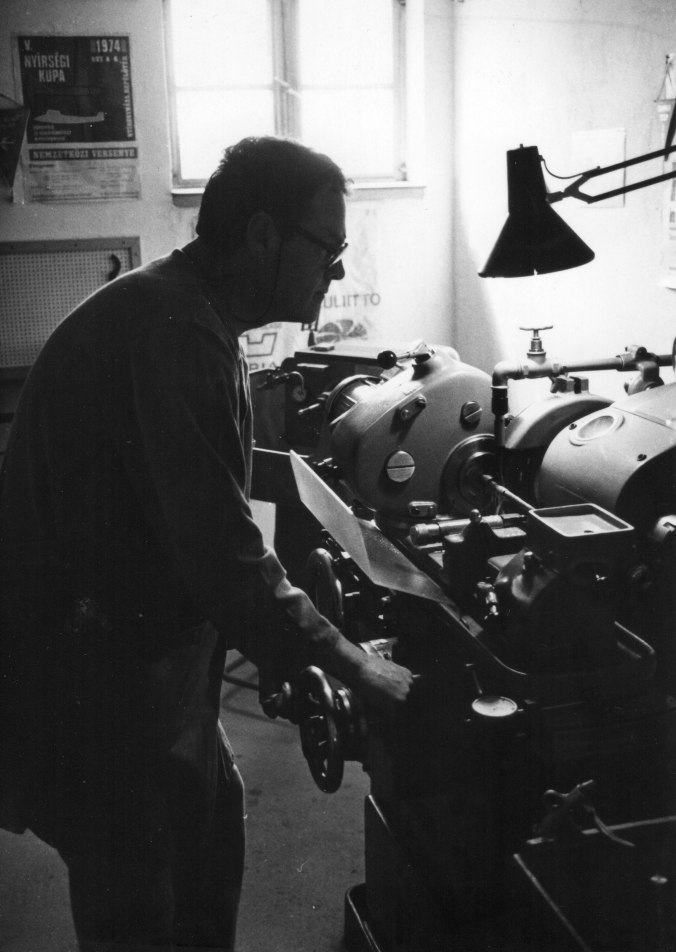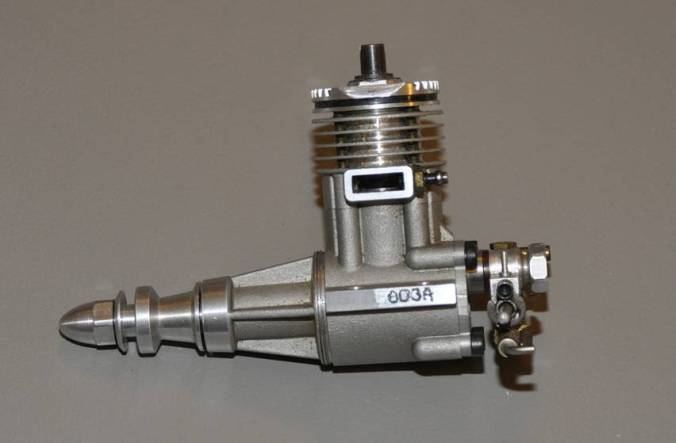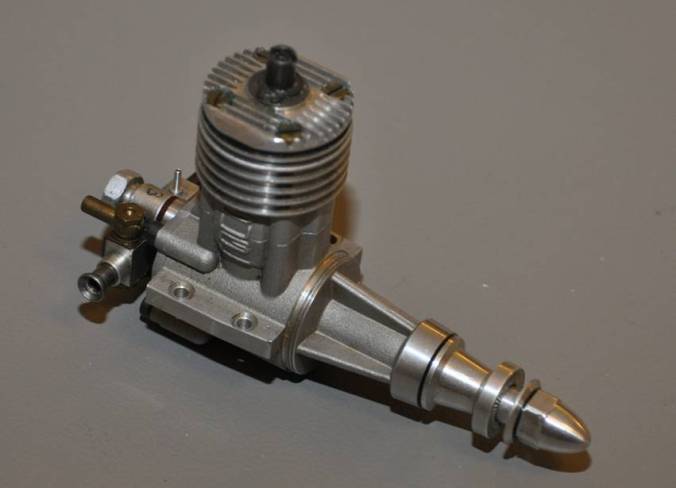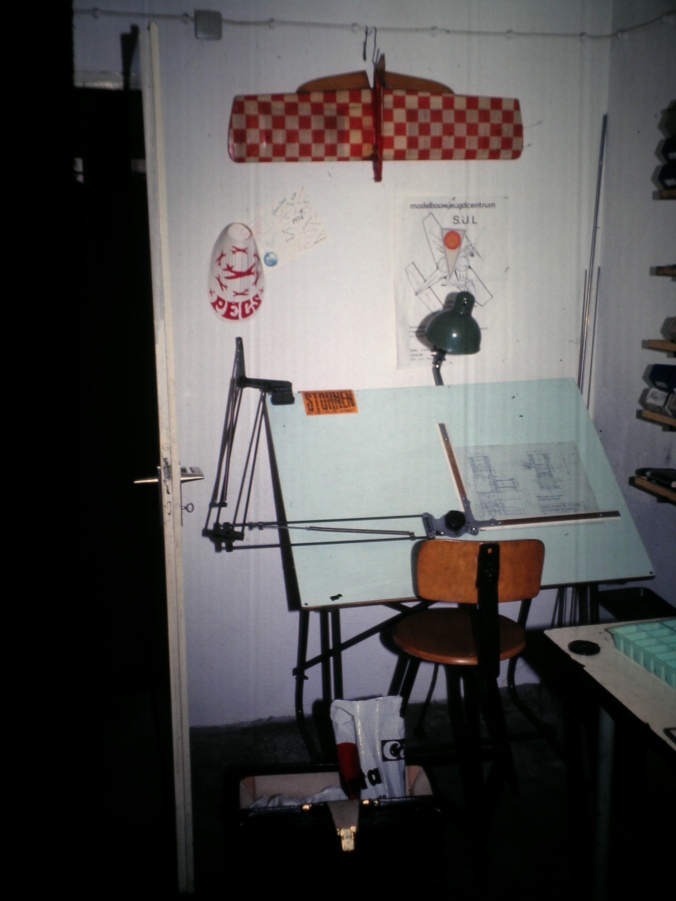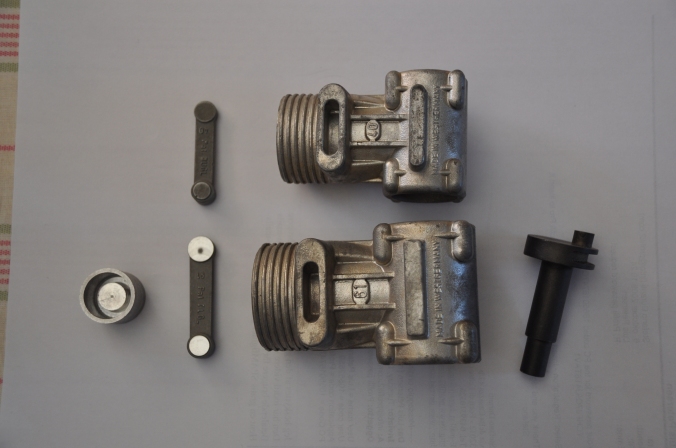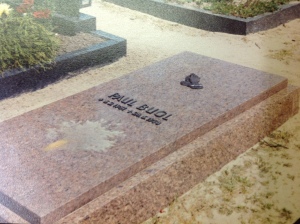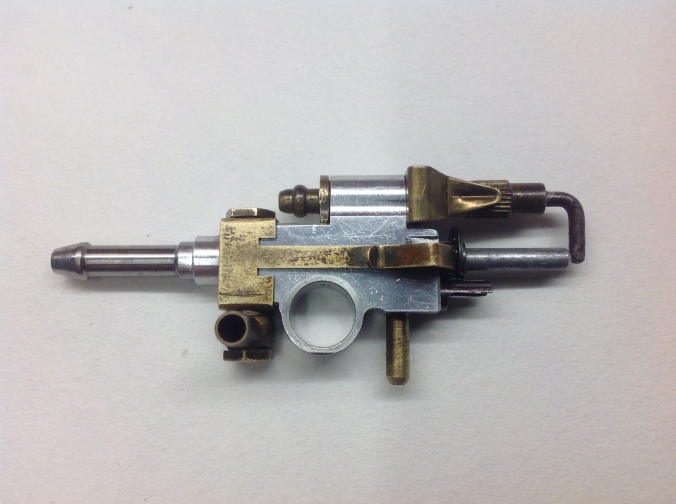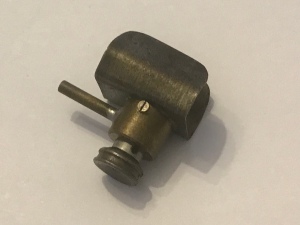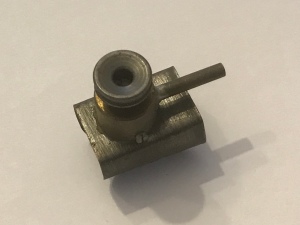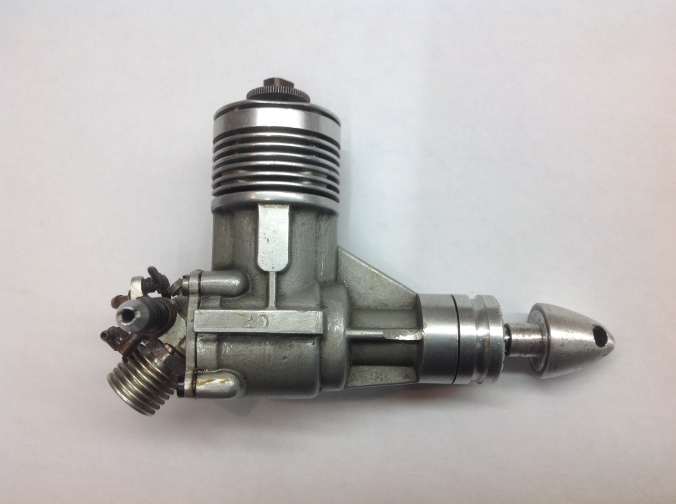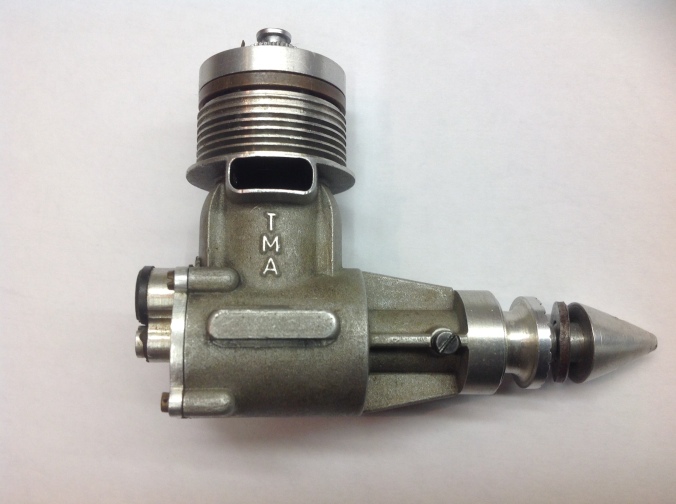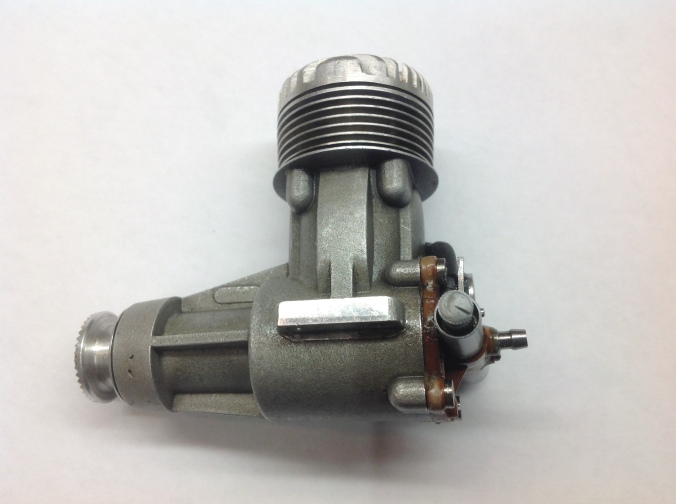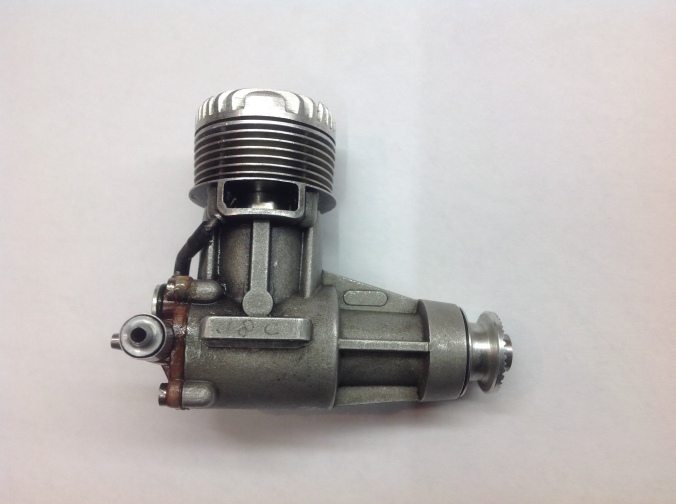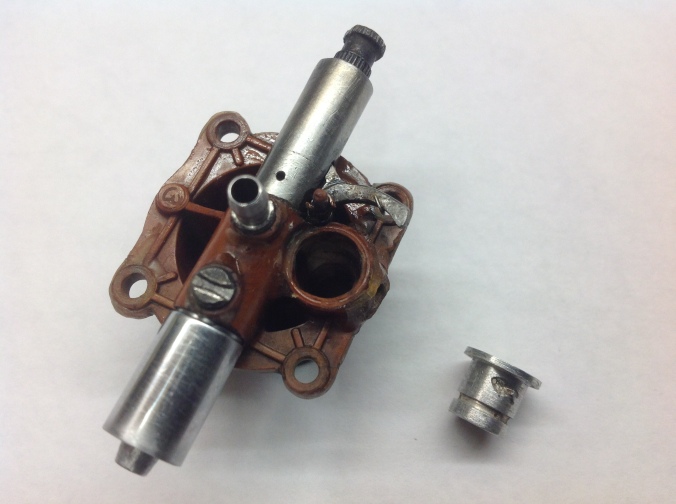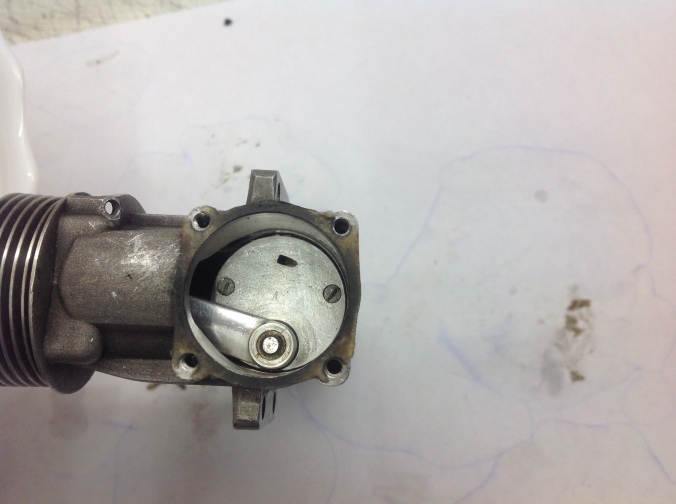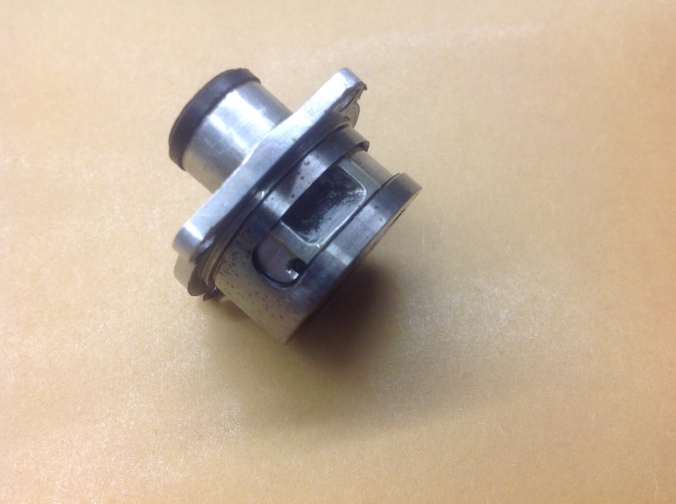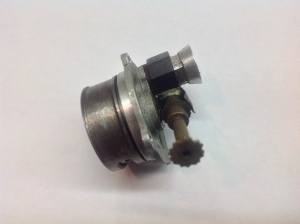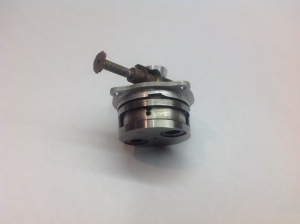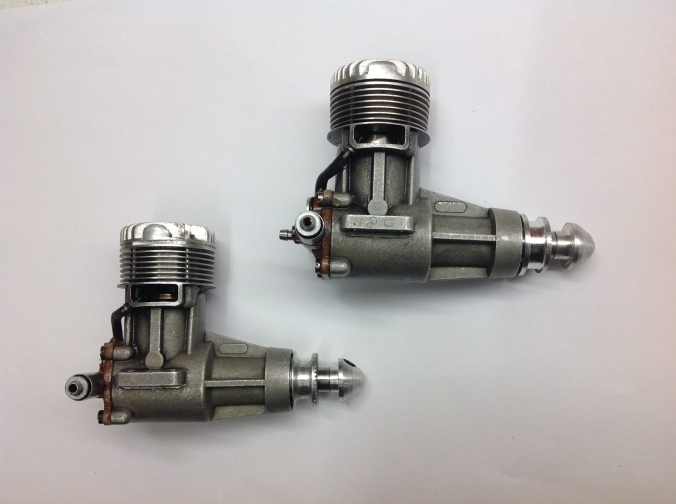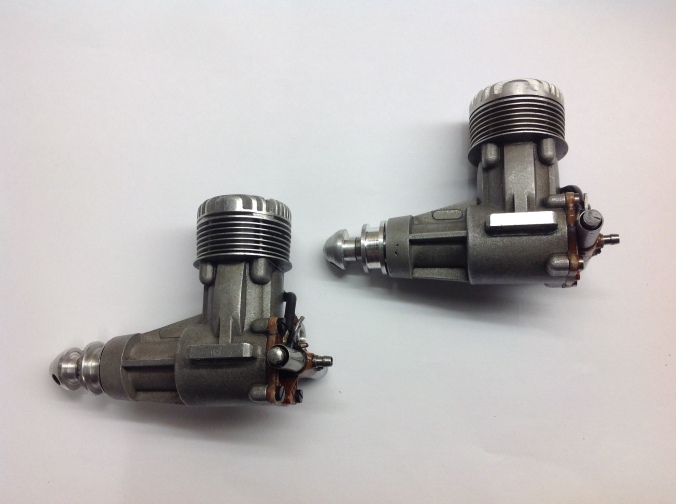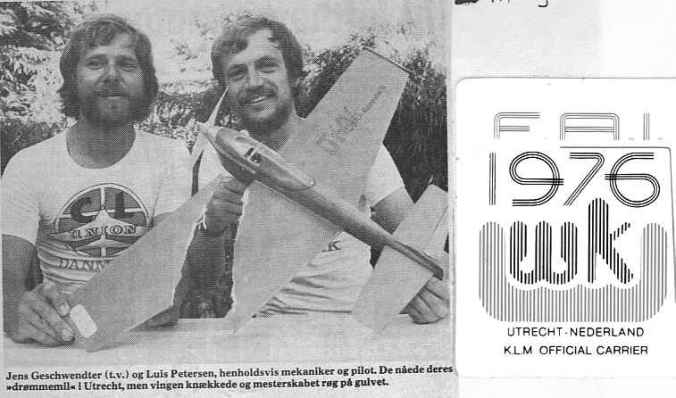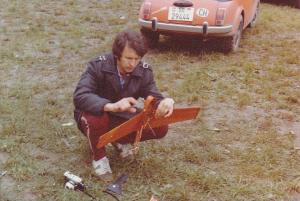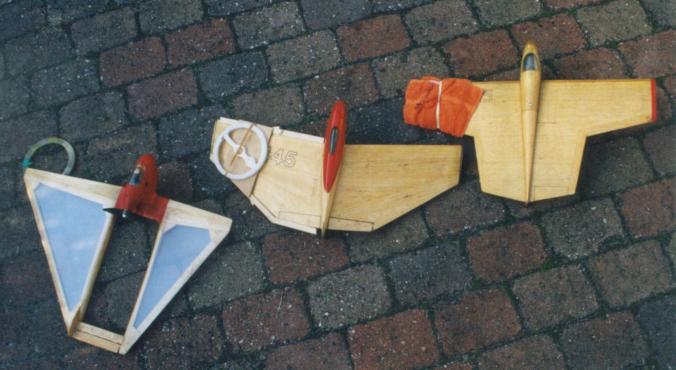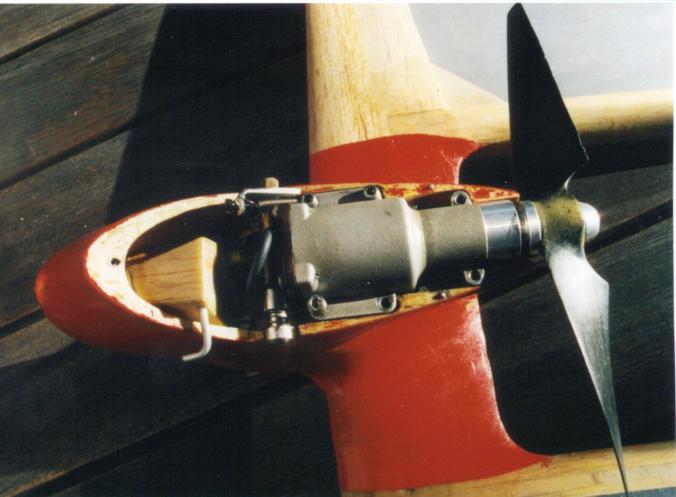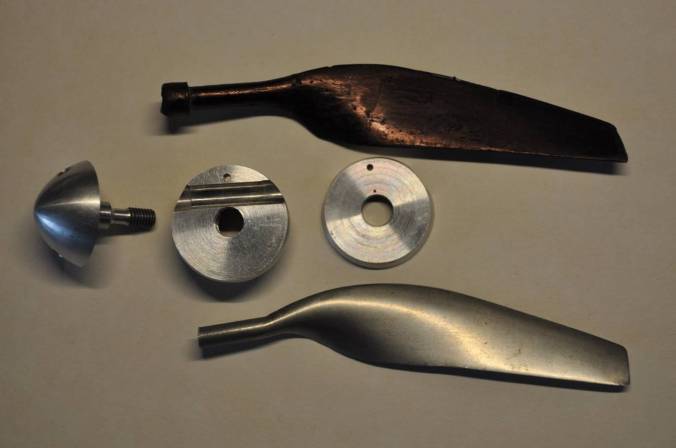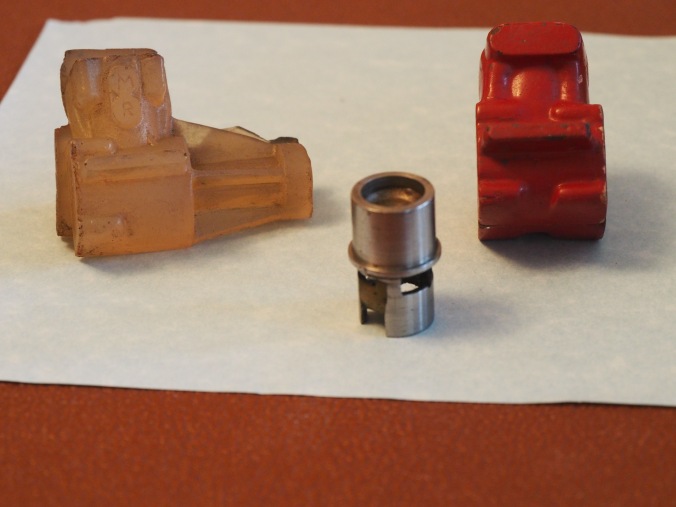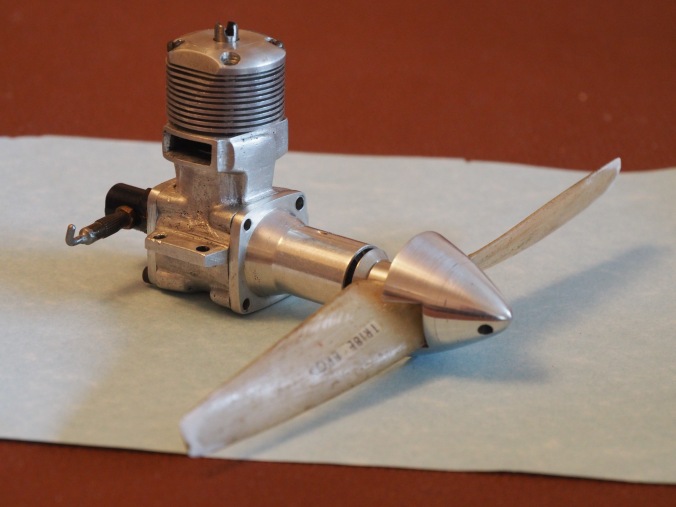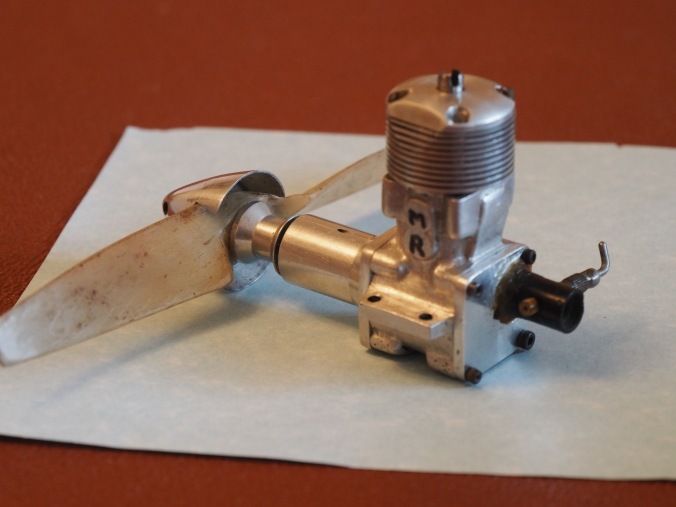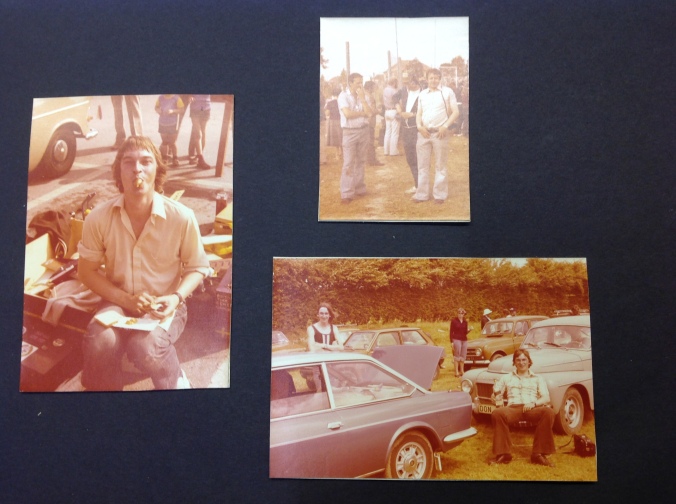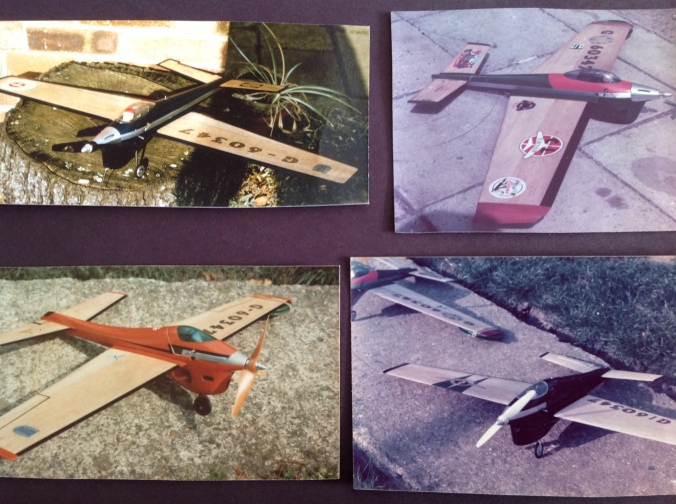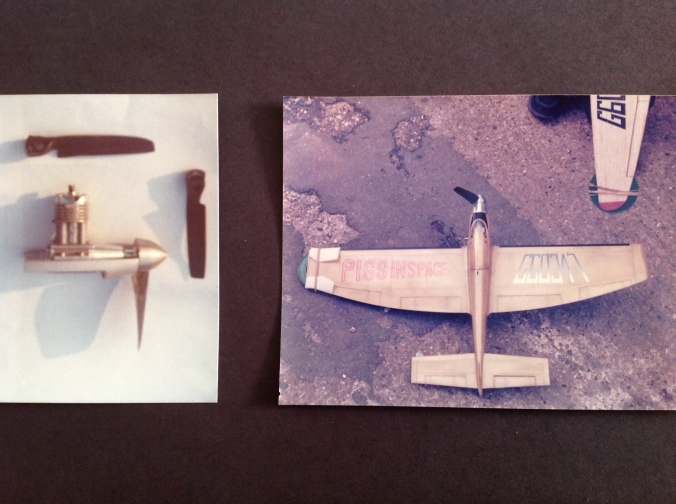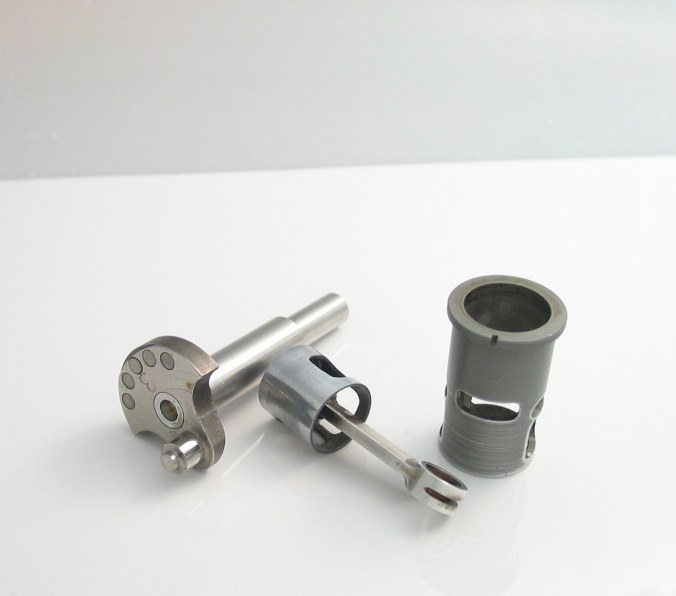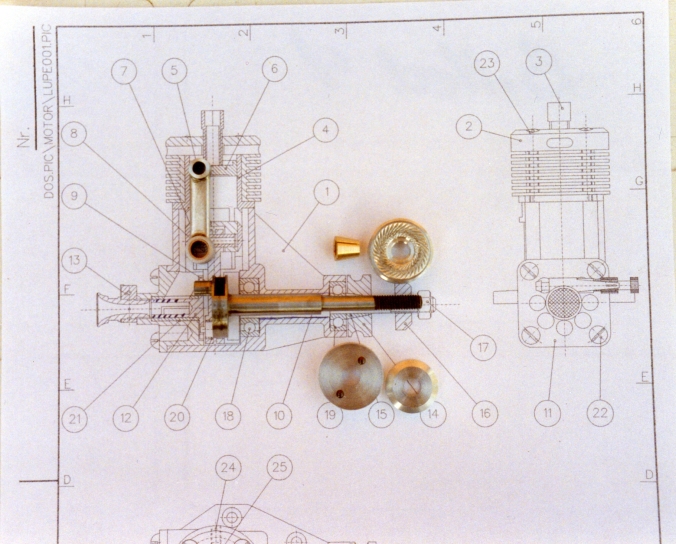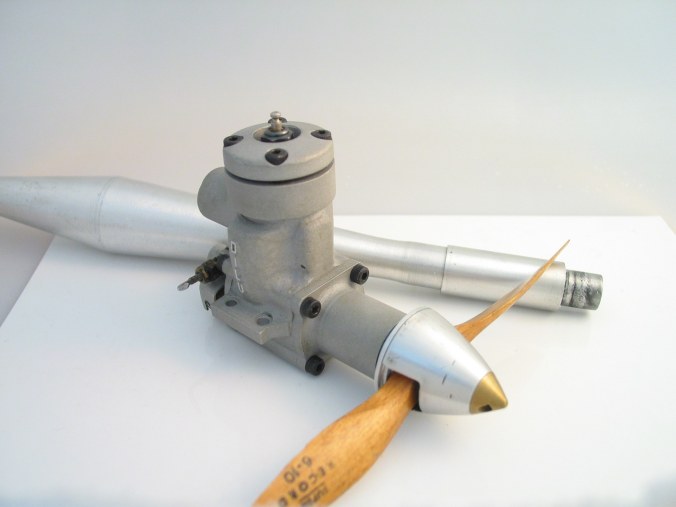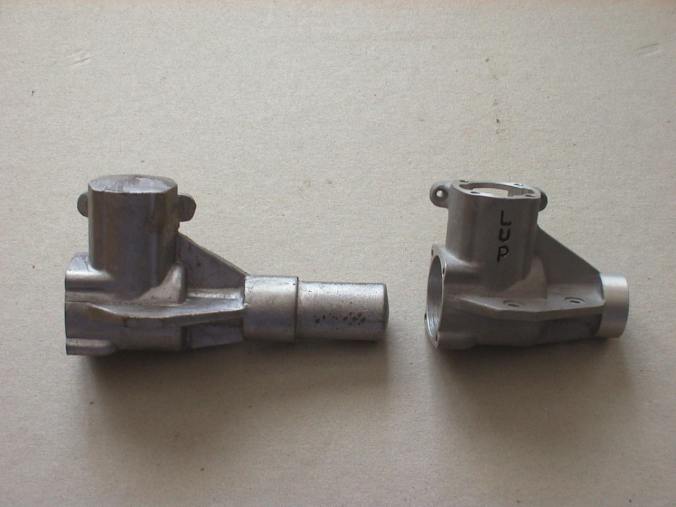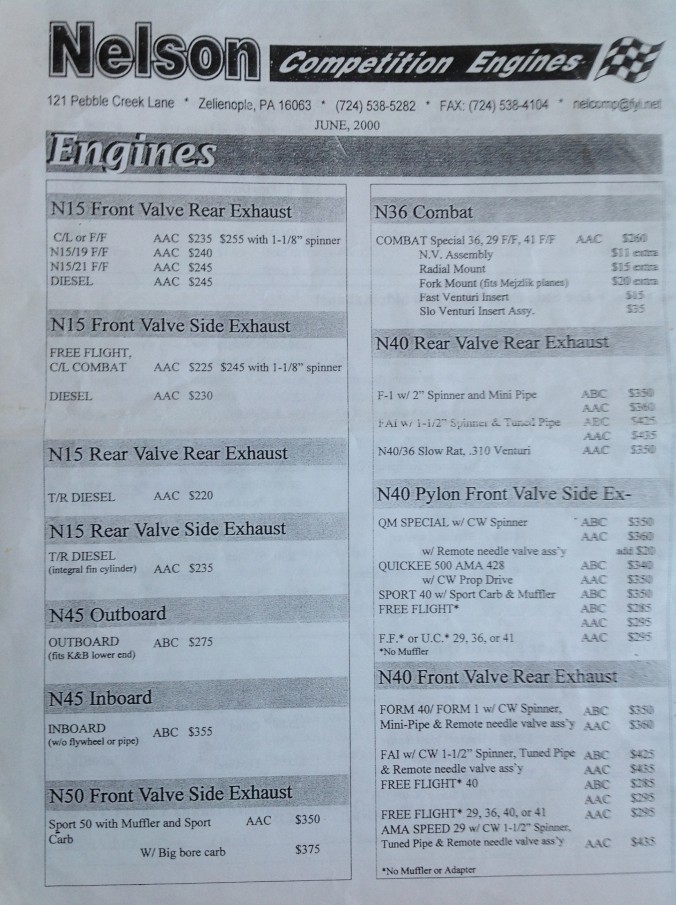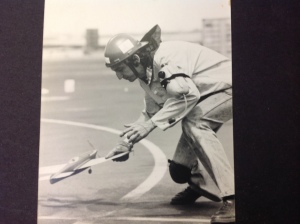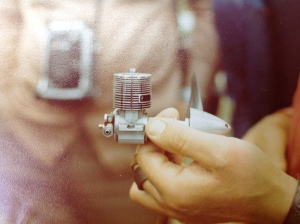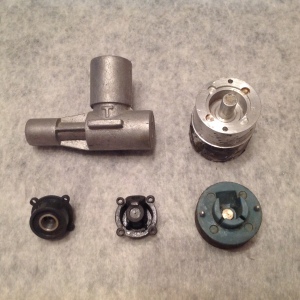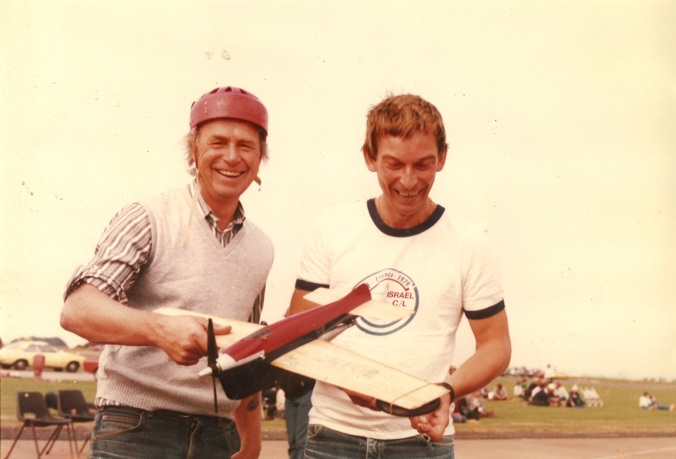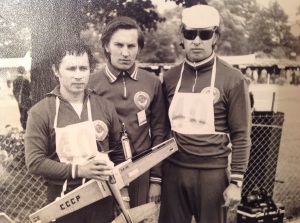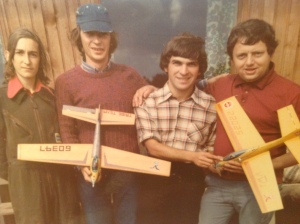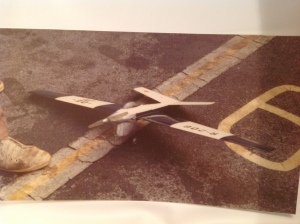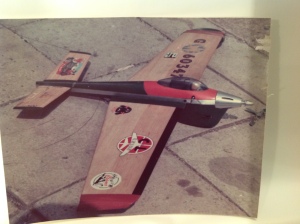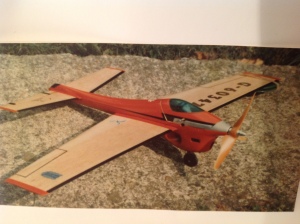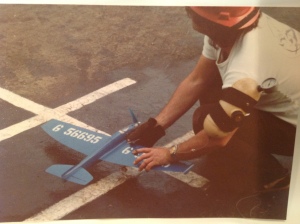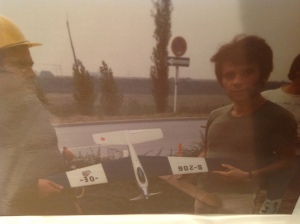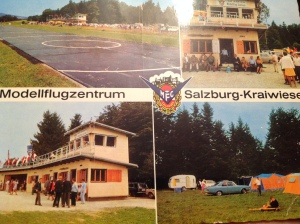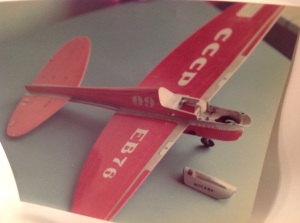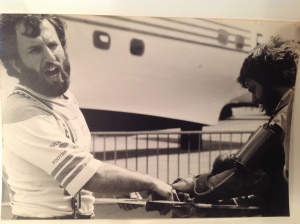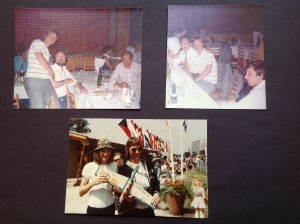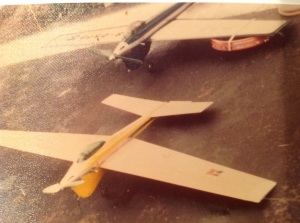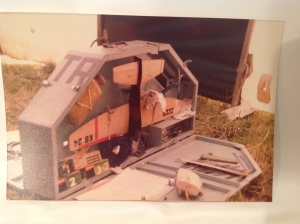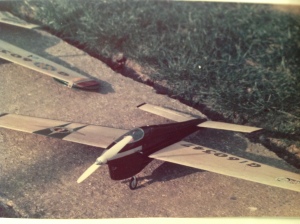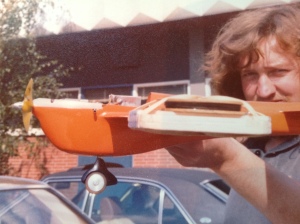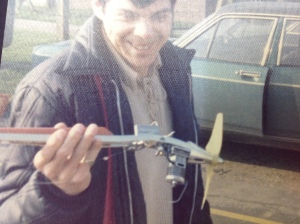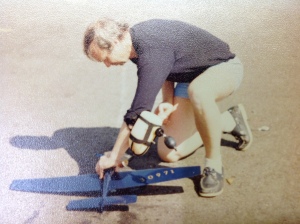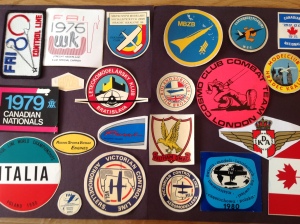The very beginning Goodyear racing
Cosmo racing teams
Me and Micky at the Nats 1969 where we came second in the final and first in the novice final at our first attempt , this was a Ginny Goodyear model powered by a ETA 15 using a Bartels 7×7.5 prop. The following year 1970 we gained the maximum points ever in John Hortons Goodyear League 60 in total.
I made this Ginny some time in 2000 ? But it was never flown in a competition .
March 2019. Someone sent me a e-mail ref drawings and plans for the Ginny model. This is all I can find unfortunately I have lost his e-mail hope he looks at some time sorry.
Where are they all now.
F2C racing
First team race model, Russian design powered by a ETA 15.
March 2019 found the original plans for the model.
We have not really mentioned Ken Bedford apart from we used his engines in Goodyear and at the start of team race, following is information and photos from my brothers collection.
The items at the top are two ETA Elite engines serial Nos 368049 and 116663 both fitted with team race back plates and Stockton and Jehlik prop drivers and spinners. The other two engines are MK 1s serial Nos 1412 and 2877.
Two ETA team race pans.
June 2018 my brother has just obtained this engine it comes complete with all paper work and box, it was purchased by LAC Remon M, at RAF Colerne who was posted to the Far East where he had problems with the motor over-heating, he contacted Ken and he made this new head with fins plus a new carburettor for him. The liner shows some work to improve the flow.
January 2019. My brother Micky has just obtained this FMV, I have no details on this motor but looks very nice.
Second model based on the Czech design 1972, this had a fibre glass fuselage made from chopped mat and polyester resin, very nice but very heavy, was fitted with a MVVS 2.5 TRS flew very well.
Czech plan 1972
First Bugl models, all balsa covered in coloured tissue paper.
Paul Bugl
Well what can I say, I only had the pleasure of knowing him for a few years before his untimely departure. He was a man who lived has life to the full and thoroughly enjoyed it.
Many people regarded Pauls efforts in team race as being in the wrong direction, all I can say is whether he was right or wrong, he was defiantly thinking out of the BOX with his ideas, so I will not pass comments on his efforts only to say, he was an excellent machinist and produced some of the very best Team race motors and parts ever available .
HP 15 Glow
MK 1 Bugl
Long shaft version
The Moskito model 1974 showed this with his metal crutch, dural motor mount, cone on the front of the motor and the filler assemble, all these parts could be obtained from Paul including wheels and leg, I think if he could have added metal wings and tail he would have done.
Many teams used the Moskito model with his engines to varying degrees of success, this was definitively a different approach.
Paul in action
Hans at work
Mick doing the same
Another example of thinking out of the Box, the Bugl Baumgartner prop and the FISCHER-NITSCHE HYPER propeller.
Other props included these, the standard KAVAN 8×4 for rev checks, Bugl props plus the blue one which was only made for Paul as this was his colour, this prop was flown at the WC. The 3 blader prop was made by Flemming Jensen and flown by Hans and John at the WC 1978.
The retract version was the ultimate Moskito, which I believe Paul only made four, one I have another went to Italy and the others are with the Austrian teams. This was engineering to its limits but unfortunately was on the heavy side.
This was Bugl land as I called it, middle floor and upstairs were living areas, the cellar was the home for motor production, this consisted of a small room for assembly with a large room for machine work and at the end two small rooms with doors for grinding work to contain the dust.
Paul with my mum and dad
Bugl MK 2 moulds before machining
Mk 2 Bugls after machine work.
Micky has just obtained this MK 2, Feb 2016
Micky has now asked me to, strip, clean and rebuild this motor.
Bugl tools, drum alignment jig, prop driver remover and piston cir-clip tools.
Looking very nice Sir, about 5 hours work to get to this stage, 40 odd years of old fuel and oil takes some time to remove, you could still smell the Amyl nitrate which was used.
Mickys motor fitted in my model.
Paul in his workshop
June 2017 just got these two drawings of the front and rear induction motors for comparison.
January 2019 Luis just sent me the following photo of the front induction Bugl he used to have.
Paul grinding pistons
The very last Bugl manufactured the MK 111 Luis informs us that 8 were only ever made.
No CAD in those days
Pauls last project 61 and 40 glow motors for RC never completed
A very sad end
Micky obtained this copy of a Bugl in 2017 this was made by Dlpl.Ing Peter Chvatal from CZECH REPUBLIC very nice.
I do not own a bugl myself I sold my three motors many years ago however I do have a lot of bits and spares. With the help from the Danes and a friend it is hoped to build a motor in the near future.
Thanks very much to Alan Knight I now own a Bugl Mk 1. Alan has built this motor over the last few weeks with the bits I had and a original Mk 1 case he had which he has had to machine finish from Paul’s drawings. Alan has made a excellent job to a very high degree of workmanship thanks again. The case has a original number F00476 all I need now is a cut-out can anyone help.
Motor complete needs cut-out ? Can anyone help.
March 2019. I have just managed to get hold of a original cut-out aluminium block, I had sufficient old parts to complete this.
All original parts.note the finger valve which he made for use with the cut out.
Russian Engines.
No mention of the Russian Engines has been made so far over this period, following are photos and other information.
Pre 1970 maker and origin not known. Just found out this is a Krasnorutski’s 1970 champs winning T.R. Motor. Updated Dec 19.
TMA 1970
TIMOFEEV – MASLOV – KRASNORUTSKI.
Original TMA motor from Plotsin Timofeev 1972 Helsinki
OMB 1972
ONUFRIENKO – MASLOV – BEBESKO.
Both motors used by Onufrienko Shapovaluv
Inside details of the OMB.
Where did it come from ? Rich run take off, look at carburettor small cut out this lined up with another inside the backplate to give extra fuel for takeoff 1970’s.
Note Turfnol plate to reduce crankcase volume.
Note small hole on crank web to feed extra fuel for rear race lubrication.
The TMA was very similar, if you look at the following photos the extra two holes on the back plate to feed a small amount of fuel to the lower end and bearing in the engine, also the two large cutouts on the crank web for bearing lubrication.
I found this back plate not sure where it is from and what engine, but definitely looks Russian. Note the two lubrication holes for the drum bearings when the inlet opening is closed.
Both OMB motors after a good clean up and oil with prop drivers and nuts.
Photos donated by Luis Petersen thanks
Paul and Hohenburg broken arm Breitenbach 1977
Luis 26th model being wind tunnel tested at University 1974
Paul landed on top of my model
Pauls model Kraiwiesen 1976
Other designs we were testing
I have added the following, myself discussing the finer points of drinking whisky or maybe team race
January 2019. Been having discussions with Luis about the HP 15 motors, Luis sent me the two following photos of th HP 15 which Ole Hasling had made very nice.
March 2023. Luis has just me four copies of their evolution of the design of the team race models they used thanks.


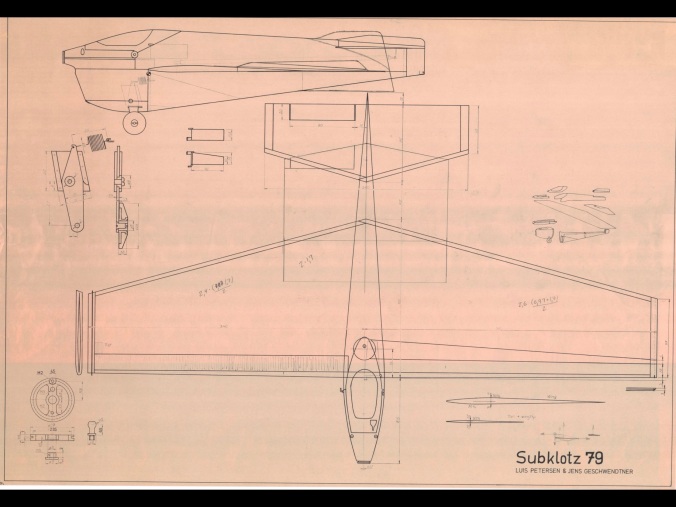
February 2021. Malcolm Ross has also sent the following information on his copy of the HP 15.
Original HP 15 Crankcase pattern and red mould ready for casting and liner.
Finished motor note propeller ( Tribe Bros)
very nice motor backplate was disc induction with bolt on front housing internal sizes are to ETA 15 measurements ie bore and stroke.
M R ( Malcolm Ross engine) Photos Malcolm Ross.
Out and about
Moskito models
The above photos show two standard models and the lower two one with a streamlined pod and boom and the second with a normal type of fuselage both made from balsa, these were comparison tests to see which one was better. We found that they were no better than the original Moskito. We also fitted many types of cooling ducks inside but still found the small hole in the front large exit at the back worked the best, why I am not sure maybe it was all the metal work around the engine, I often wondered how a Moskito would go with a Nelson up front.
later on in my work I was involved in a project called base bleed, this is where the rear of ammunition which is flat, once fired this produces a vacuum at the rear of the round as it travels through the air, this decreases the range and accuracy, to overcome this a small charge is placed at the rear and burns throughout the flight filling the vacuum and thus improving both the problems, I just wonder lf the open back on the Moskito model had a similar effect with the air going straight through just an idea, we all know a streamlined model is the best but what about the Moskito ?
Pigs in space model fitted with MK 1 Bugl and single blade prop.
Luis Petersens other involvement in production of engines
University project 1972
Molten engine DC winner 1974
Front Exhaust mag case flown Nats 1973
Henry Nelson
The Nelson T/R engine, one of the most successful engines available at the time. The originals were steel liner and piston this was followed by the famous AAC models, these motors set new standards in production and performance this being achieved by CNC manufacture and AAC liners and Pistons. Nelson engines were a hall-mark in time and worthy a mention in T/R history.
The only photo I have of Henry on the left with Dave Shadel, cir 1995.
I found this list of engines Henry was producing in 2000, well done Henry how many manufacturers of engines are still in business for so long.
The photo shows the original steel model with box (which I still own) this motor did 3.39 with 3 stops, it’s bearing and piston fit are still good.
Just after doing 3.39 note single blade prop. This was a copy of Krusnorutski’s propeller used at the Champs, the photo shows the first prop in the centre with a brass counter weight and the bottom prop fitted with Tungsten counter weight these were made from bar stock, the propeller was in two different sizes short dia for heats two stops and a final prop which was larger in dia for extra range to save a pit stop.
My first Nelson models looked old fashion, but went fast.
Mick in action
This Nelson is one I modified to front exhaust in the era of Russian motors being front exhaust. This motor preformed fairly well with a slight improvement over the rear exhaust, you will note that I had made a fully machined back plate with cut/out to try to overcome problems with commercially available cut/outs at the time.
kamerenko/Krasnorutsky single bladed model.
Most Team Race teams had aspirations of making their own engines with maybe not realising just how much work is involved, the photo shows my efforts with a cast crank case, note the extra length on the front and rear case for holding while machining. The rear back plate was to be cast in carbon fibre with a metal insert this would also include the cut/out if tests with carbon proved satisfactory however here ended development.
Interesting design not sure if it was ever made. Contacted by Robert avtandil the motor was made and very good however it was deemed to be outside the FAI rules thanks for info.
B Team race, a mans sport?
I had the pleasure or sentence, whichever way you like to look at it of flying these beasts for Gordon Yeldham for some time, the photos below show us winning the Nats with a new heat and final record.
IControl line flying Control line flying Control line flying Control line flying
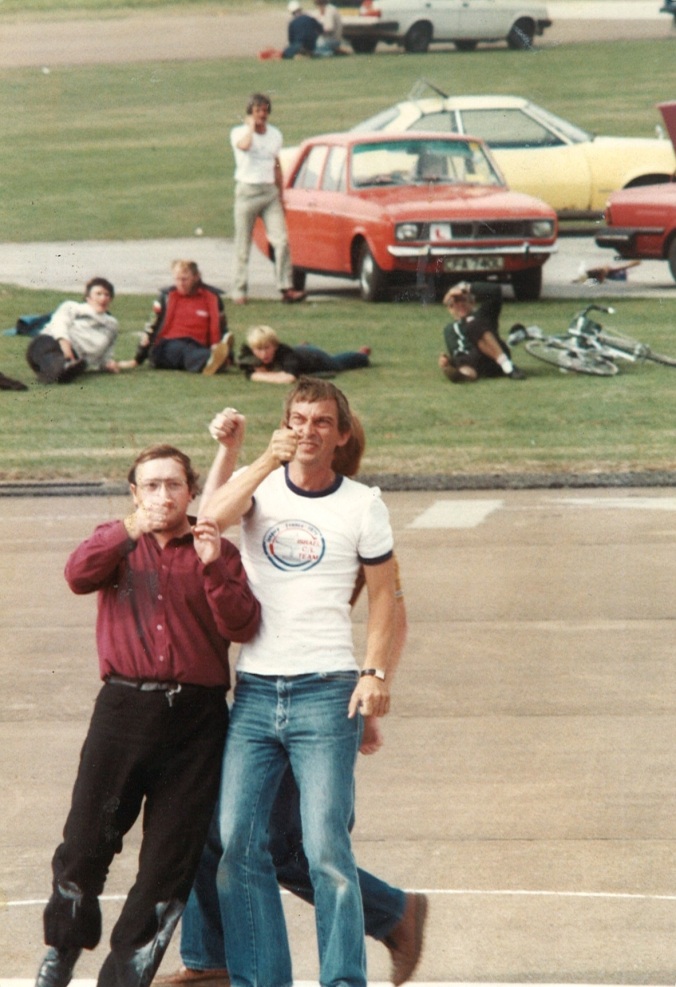 Control line flying Control line flying Control line flying Control line flying Con
Control line flying Control line flying Control line flying Control line flying Con
This model was powered by a OPS 29 on pipe, did it go awesome and the pull, it was not the fastest we had this was a Nelson 29 on pipe, we practiced many times at Rochester but the motor would just come on pipe as soon as Gordon would release it, resulting in a very high-speed wing over with me running back like hell. Gordon tried many mods but could not solve the problem what a pity could have been great times.
1/2 A team race
I had some very good and interesting times flying this class with Taffy and his own engines. Many people think this is a slow class to fly because the engine size is only 1.5 cc however the speed reached and the rotational speed for the pilot was faster than the F2C models of the time. Photos of Taffy and myself.


